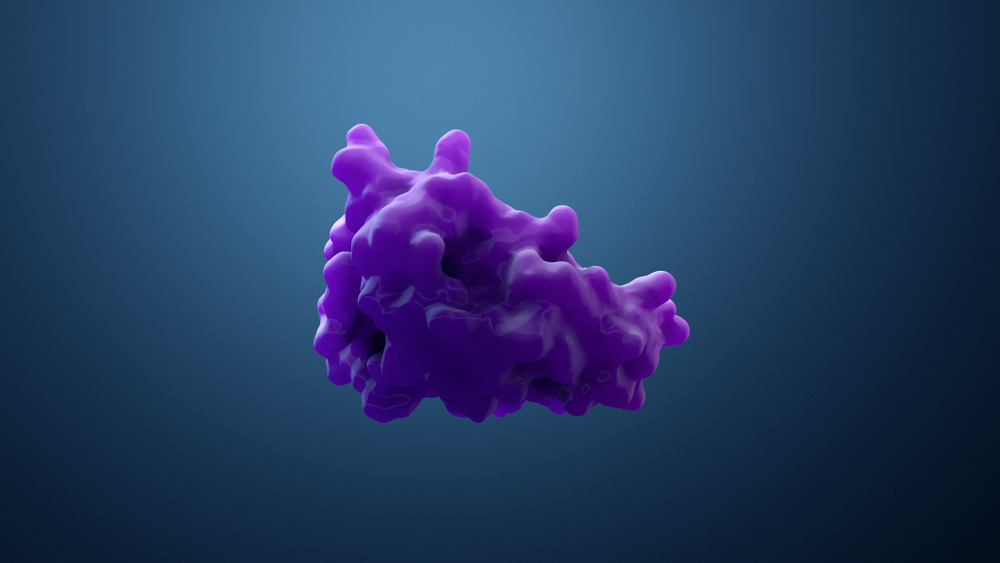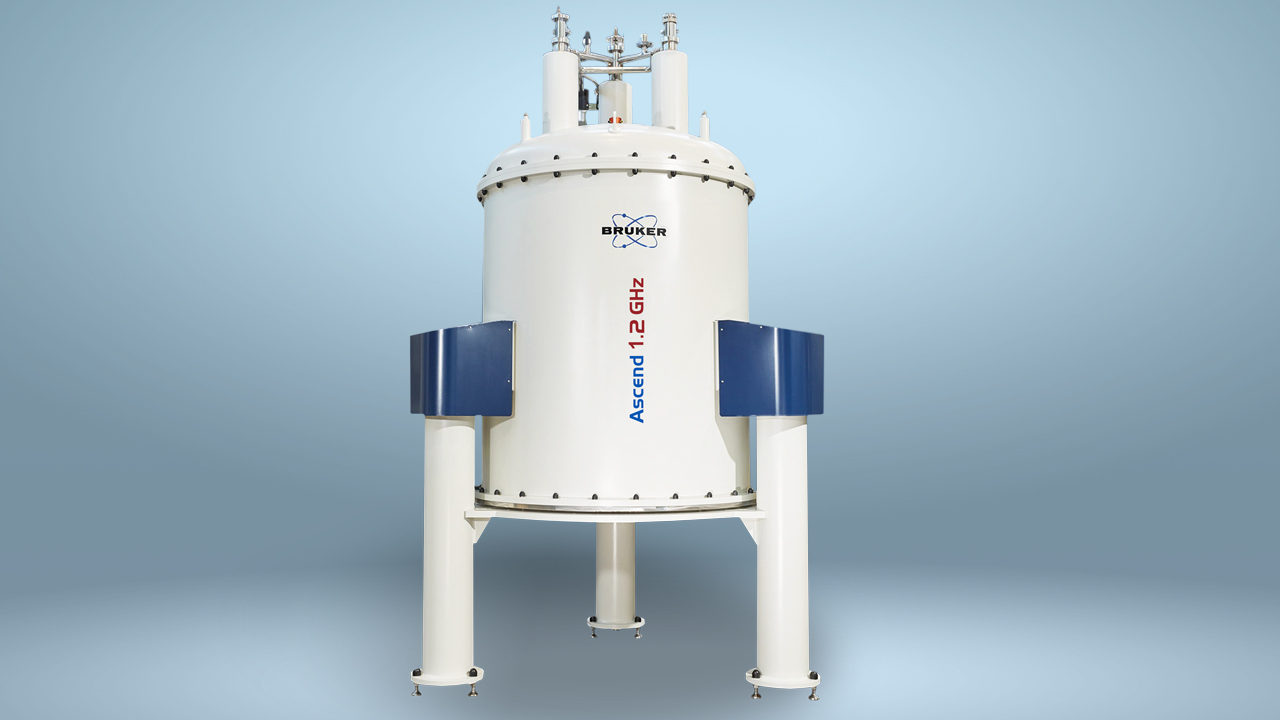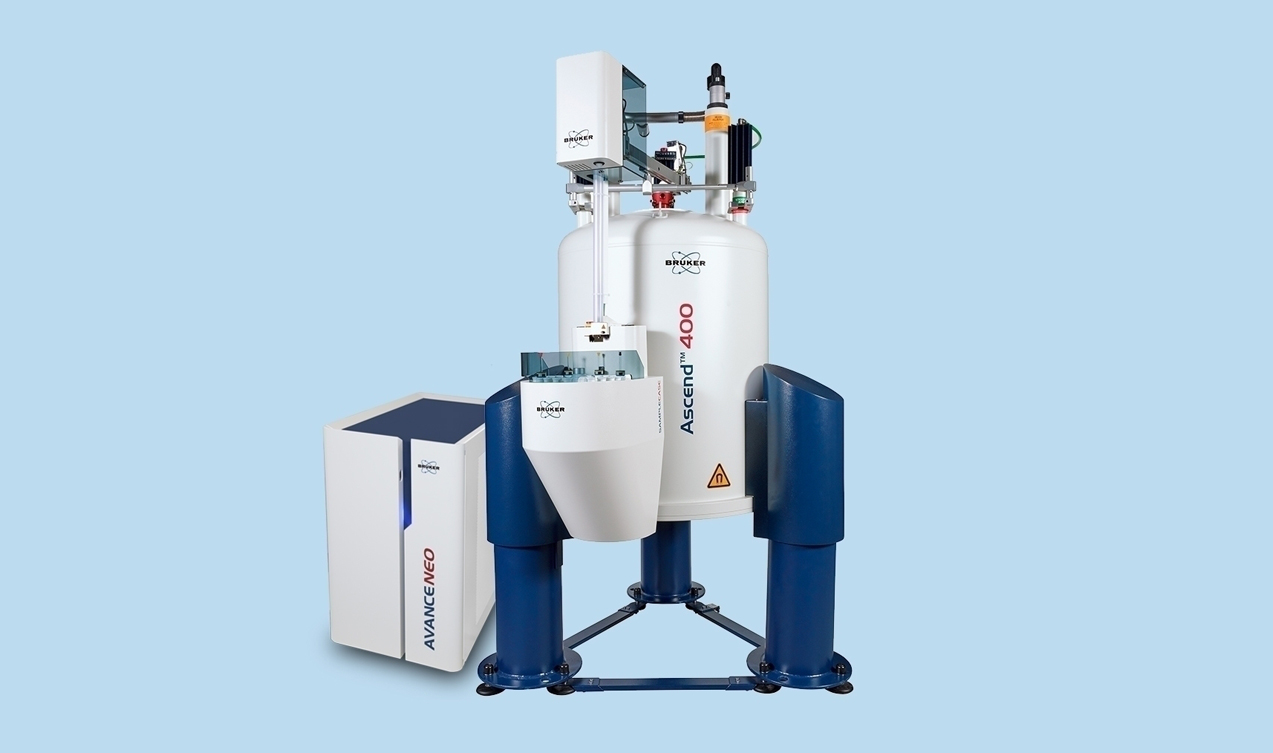

天然変性タンパク質の配列特異的な帰属
At present, we do not fully understand the function, structure, and dynamics of intrinsically disordered proteins (IDP) in biological systems.
Due to their characteristic lack of structure and high mobility, analyzing IDPs can be difficult, but nuclear magnetic resonance (NMR) can provide sequence-specific information about these fascinating macromolecules.1-3
Proline signals are usually invisible in 1H-15N NMR experiments because they lack a hydrogen atom on their alpha-amino group. However, they can play an essential role in maintaining a flexible structure and preventing the formation of secondary motifs in IDPs.4
A recent publication in ChemBioChem details how researchers from Italy used 13C direct‐detection NMR spectroscopy to detect proline residues in IDPs. Their NMR spectra were acquired on a Bruker AVANCE NEO spectrometer equipped with a cryogenically cooled probe head optimized for 13C-direct detection.4
Using their technique, they were able to produce a proline fingerprint spectrum for an IDP called CBP-ID4, successfully detecting all 45 proline residues in the protein, with almost no spectral overlap. 4
The NMR spectra of IDPs
3D triple-resonance experiments using 13C, 15N, and 1H often allow the complete assignment of NMR signals from globular proteins. However, the flexibility of IDPs means that 3D triple resonance does not provide enough resolution for complete assignment, and high resolution in multi-dimensions is required.3,5,6
A publication in the Journal of Biomolecular NMR by the same team of Italian researchers outlines how they used 13C-direct detected APSY NMR experiments to achieve the sequence-specific assignment of alpha-synuclein.6
They used the same Bruker AVANCE NEO spectrometer and probe set up as in their previous study, and they were able to assign the chemical shifts of C’ and N atoms in peptide bonds along the backbone of alpha-synuclein, obtaining information on the amino acid sequence along the protein backbone.6
Detecting post-translational modifications
IDPs, like all proteins, can be subjected to a range of post-translational changes. These modifications can be challenging to detect and study using NMR. A recent paper by scientists from Masaryk University in the Czech Republic describes how they used 1D 31P NMR to detect the presence of phosphorylation modifications in IDPs, and 2D 1H-13C, 1H-15N HSQC experiments to identify the phosphorylated residues. Their NMR spectra were obtained with a Bruker AVANCE III HD Spectrometer (Now AVANCE NEO)7.
Their 31P spectra successfully confirmed two phosphorylation sites in their model peptide, while HSQC experiments identified tyrosine as the phosphorylated residue in their model protein. 7
Conclusions
生体系の天然変性タンパク質(IDP)の機能や構造、ダイナミクスは、まだ完全に解明されていません。
IDPは、構造の欠如(伸びきった構造)と高い運動性という特性のために分析が困難であると考えられますが、核磁気共鳴(NMR)法ではこのような興味深い巨大分子に関する配列特異的な情報を得ることができます1-3。
プロリンはアミドプロトンを持たないため、通常の 1H-15N 相関実験ではプロリン由来の信号が検出されません。しかし、プロリンはIDPにおける構造の柔軟性を保ち、二次構造のモチーフの形成を妨げるという、非常に重要な役割を担っている可能性があります4。
ChemBioChemに最近掲載された論文には、イタリアの研究チームが 13C 直接検出のNMR実験を用いてIDPのプロリン残基を検出した経緯が詳しく報告されています。NMRスペクトルの測定には Bruker AVANCE NEO分光計と、13C 直接検出用に最適化された極低温に冷却されたクライオプローブが使用されました4。
13C 検出の実験を駆使することで、CBP-ID4と呼ばれるIDPのプロリンの指紋領域のスペクトルを得ることができ、このタンパク質に含まれる45個全てのプロリン残基を、シグナルの重なり合いがほとんどなく検出することに成功しました4。
IDPのNMRスペクトル
13C, 15N および 1H を用いた3次元の三重共鳴実験では、球状タンパク質由来のNMR信号の完全な帰属がしばしば実現しています。ところが、IDPはその柔軟性ゆえに、3次元の三重共鳴法では完全な帰属をするために十分な分解能が得られません。多次元スペクトルにおいて高い分解能が必要とされるためです3,5,6。
このイタリアの研究チームがJournal of Biomolecular NMRに発表した論文によると、彼らは 13C 直接検出APSY NMR実験を用いることで、αシヌクレインの配列特異的な帰属を達成しました6。
使用したのは先の研究と同じBrukerのAVANCE NEO分光計と同じプローブの組み合わせで、αシヌクレイン骨格中のペプチド結合におけるカルボニル炭素とアミド窒素原子の化学シフトの帰属を行い、タンパク質骨格に沿ったアミノ酸配列の情報を導き出すことができたとされています6。
翻訳後修飾の検出
IDPは全てのタンパク質と同様、翻訳後に様々な変化を受ける可能性があり、こういった修飾はNMRを用いても検出や検討が困難な場合があります。チェコ共和国のマサリク大学の科学者チームは最近の論文で、1次元 31P スペクトルを用いてIDPにリン酸化修飾の存在を検出したこと、そして、2次元 1H-13C、1H-15N HSQC実験によりリン酸化された残基を同定したことを報告しました。NMRスペクトルの測定には、BrukerのAVANCE III HD分光計(現在のAVANCE NEO)が使用されました7。
得られた 31P スペクトルからはモデルペプチド中の2つのリン酸化部位が確認され、HSQC実験ではモデルペプチド中のリン酸化された残基としてチロシンが同定されました7。
結論
NMRはIDPの構造やダイナミクスの研究に役立つ強力な技術です。不完全な帰属、化学シフトの狭い領域におけるシグナルの重なり合い、翻訳後修飾の検出といったIDPにおける課題は、最新技術をもって克服することができるのです。生物学的に重要なIDPを特徴づけることは、様々な疾患の新たな治療法の開発に貢献するものと期待されます。
参考文献
- ‘Structure and Function of Intrinsically Disordered Proteins’ —Tompa P, Fersht A, CRC, 2009.
- ‘Application of NMR to studies of intrinsically disordered proteins’ — Gibbs EB, Cook EC, Showalter SA, Archives of Biochemistry and Biophysics, 2017.
- ‘NMR contributions to structural dynamics studies of intrinsically disordered proteins’ — Konrat R, Journal of Magnetic Resonance, 2014.
- ‘Prolines’ fingerprint in intrinsically disordered proteins’ — Murrali MG, Piai A, Bermel W, Felli IC, Pierattelli R, ChemBioChem, 2018.
- ‘Intrinsically Disordered Proteins Studied by NMR Spectroscopy’ —Felli IC, Pierattelli R, Springer, 2015.
- ‘13C APSY-NMR for sequential assignment of intrinsically disordered proteins’ — Murrali MG, Schiavina M, Sainati V, Bermel W, Pierattelli R, Felli IC, Journal of Biomolecular NMR, 2018.
- ‘Efficient and robust preparation of tyrosine phosphorylated intrinsically disordered proteins’ —Brázda P, Sedo O, Kubícek K, Štefl R, BioTechniques, 2019.
References
- ‘Structure and Function of Intrinsically Disordered Proteins’ —Tompa P, Fersht A, CRC, 2009.
- ‘Application of NMR to studies of intrinsically disordered proteins’ — Gibbs EB, Cook EC, Showalter SA, Archives of Biochemistry and Biophysics, 2017.
- ‘NMR contributions to structural dynamics studies of intrinsically disordered proteins’ — Konrat R, Journal of Magnetic Resonance, 2014.
- ‘Prolines’ fingerprint in intrinsically disordered proteins’ — Murrali MG, Piai A, Bermel W, Felli IC, Pierattelli R, ChemBioChem, 2018.
- ‘Intrinsically Disordered Proteins Studied by NMR Spectroscopy’ —Felli IC, Pierattelli R, Springer, 2015.
- ‘13C APSY-NMR for sequential assignment of intrinsically disordered proteins’ — Murrali MG, Schiavina M, Sainati V, Bermel W, Pierattelli R, Felli IC, Journal of Biomolecular NMR, 2018.
- ‘Efficient and robust preparation of tyrosine phosphorylated intrinsically disordered proteins’ —Brázda P, Sedo O, Kubícek K, Štefl R, BioTechniques, 2019.


